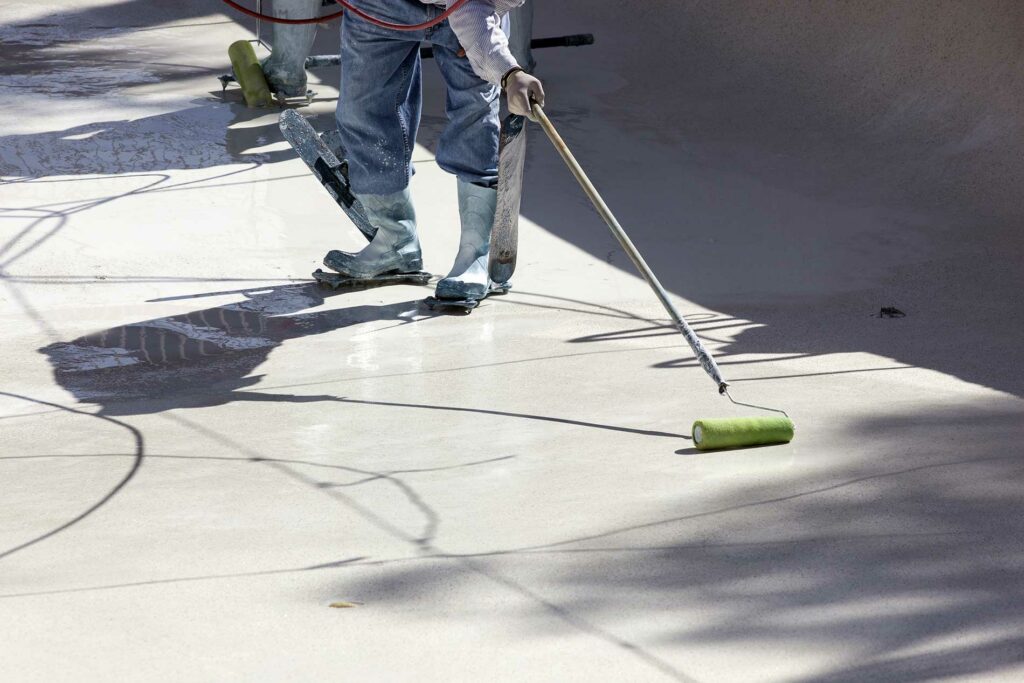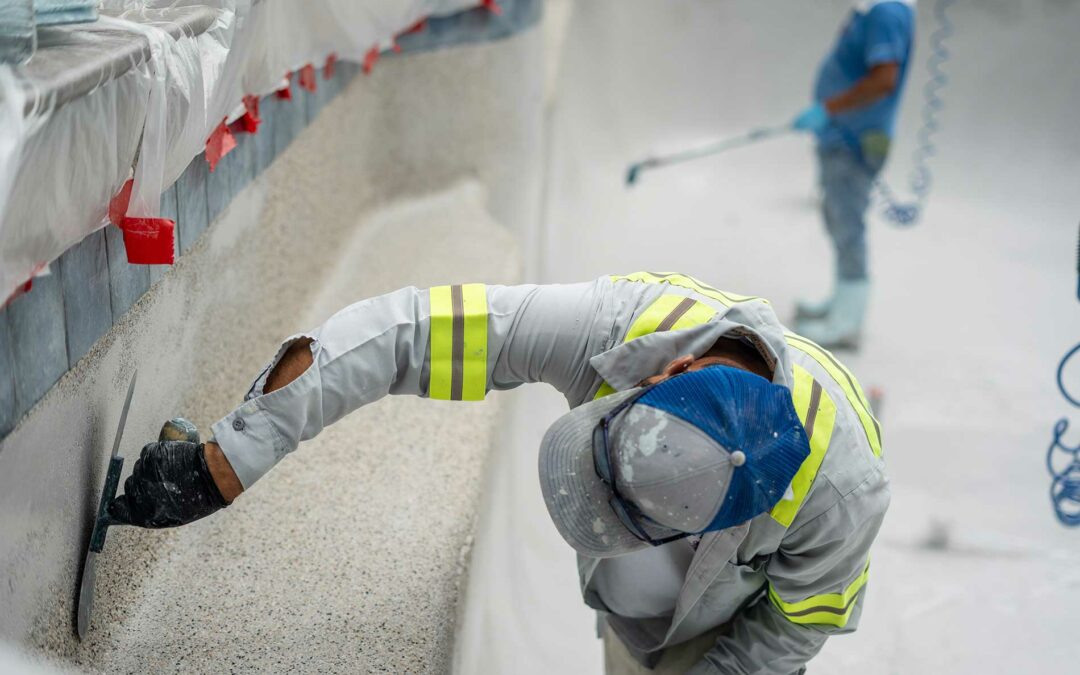Swimming pools invariably make for a refreshing oasis in the backyard. They serve as exercise-inducers, playgrounds or even a hydrotherapy solution. We can’t wait for another hot, beautiful Okanagan summer by the pool! If you think your pool might need some touching up, now is the time to read on and call the pros at Deckside Pools and book a visit for the early spring.
There are 3 types of pools: in-ground concrete (poured or pre-formed), fibreglass, and vinyl above ground. It is possible to rejuvenate your pool! For in-ground pools, sometimes a new lining fits the bill. However, for concrete in-ground pools, you might need to consider resurfacing.
What is pool resurfacing?
It is a way of adding freshness to your pool. In-ground concrete pools have a protective layer of plaster, pebbles or fibreglass. First, you prepare the existing surface for a new plaster or pebble coat. Depending on the nature of the cracks or unevenness, you might need sandblasting or hydroblasting or adding a bond coating.
How often should the resurfacing take place?
If properly maintained, your water chemistry will not damage the long life of a pool’s finish. You should consider resurfacing if you happen to spot:
- Stains that are difficult to remove
- Rough texture
- Leaks or cracks
- Discoloration
Assuming quality materials and installation, and proper chemical levels, you can expect these lifespans:
- White Plaster: 5 to 15 years
- White Quartz: over 10 years
- Exposed pebble: over 15 years
- Polished pool finishes: 5 to 15 years
How long does resurfacing take?
Generally, pool resurfacing can take between 5 to 7 days to complete. Weather can cause delays and so it is best to plan for 14 days.
Types of Pool Finishes
Plaster
Plaster is made up of water, marble sand or limestone, and white cement. It is affordable yet classic and elegant. It can attract algae, and you will have to engage in weekly maintenance and acid wash once every 3 to 5 years.
When it comes to replastering, you can cover a distance of 60 square feet for $130 with a DIY approach. When hiring professionals, plain plaster costs about $5/square foot and polished plaster about $10/square foot.
Fibreglass
This is the most popular choice for resurfacing; fibreglass is flexible and resistant. There are other benefits as well: this material is long-lasting compared to concrete or plaster. It also feels smoother and hence absorbs fewer chemicals and less organic material. What’s more, the surface resists algae stains. It can cost you between $5 and $7 per square foot to apply.
Paint
This is the easiest and least expensive. But this comes at a considerable cost – the shortest lifespan. Acrylic paint can last 2 to 3 years, epoxy between 7 and 10, and rubberised latex paint anywhere in between. In terms of cost, acrylic paint can cost about $50 per gallon and epoxy about $100. A gallon can cover up to 100 square feet.
Tile
Pool tiles are usually made from porcelain, stone or glass. You can get a classy look by using glazed, hand-painted or textured tiles. In tiling, ceramics can cost about $4/square foot, stone about $7 and glass tile up to $50. The good news is that the surface can last at least 20 years once tiled.

Resurface your swimming pool with us!
Deckside Pool & Spa would be pleased to take a look at your pool and discuss resurfacing options – give us a call! We want to be your Penticton pool company, for installations, repairs and supplies. As a part of our after-sales service, we provide regular maintenance visits.

